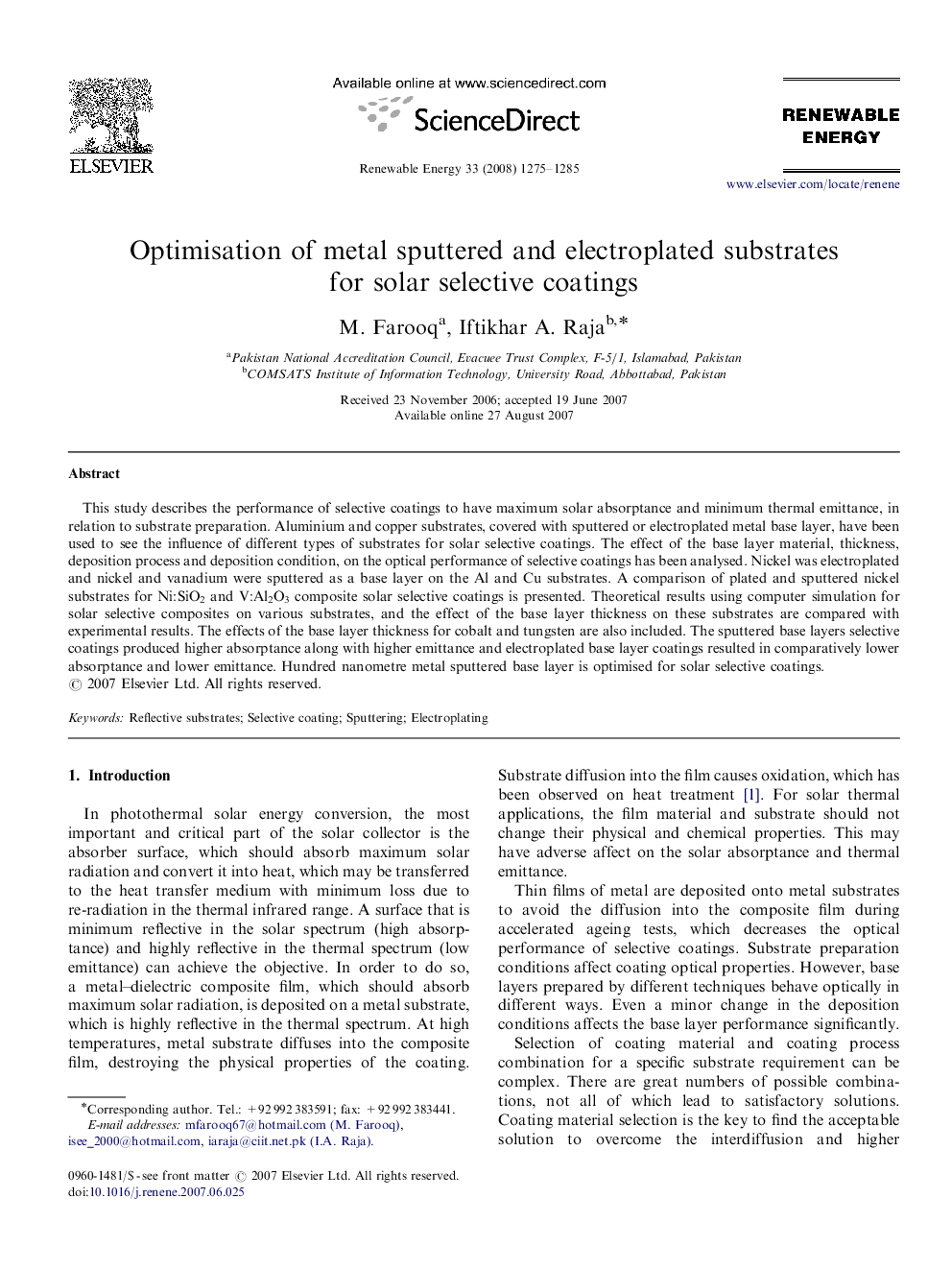| Article ID | Journal | Published Year | Pages | File Type |
|---|---|---|---|---|
| 302750 | Renewable Energy | 2008 | 11 Pages |
This study describes the performance of selective coatings to have maximum solar absorptance and minimum thermal emittance, in relation to substrate preparation. Aluminium and copper substrates, covered with sputtered or electroplated metal base layer, have been used to see the influence of different types of substrates for solar selective coatings. The effect of the base layer material, thickness, deposition process and deposition condition, on the optical performance of selective coatings has been analysed. Nickel was electroplated and nickel and vanadium were sputtered as a base layer on the Al and Cu substrates. A comparison of plated and sputtered nickel substrates for Ni:SiO2 and V:Al2O3 composite solar selective coatings is presented. Theoretical results using computer simulation for solar selective composites on various substrates, and the effect of the base layer thickness on these substrates are compared with experimental results. The effects of the base layer thickness for cobalt and tungsten are also included. The sputtered base layers selective coatings produced higher absorptance along with higher emittance and electroplated base layer coatings resulted in comparatively lower absorptance and lower emittance. Hundred nanometre metal sputtered base layer is optimised for solar selective coatings.
